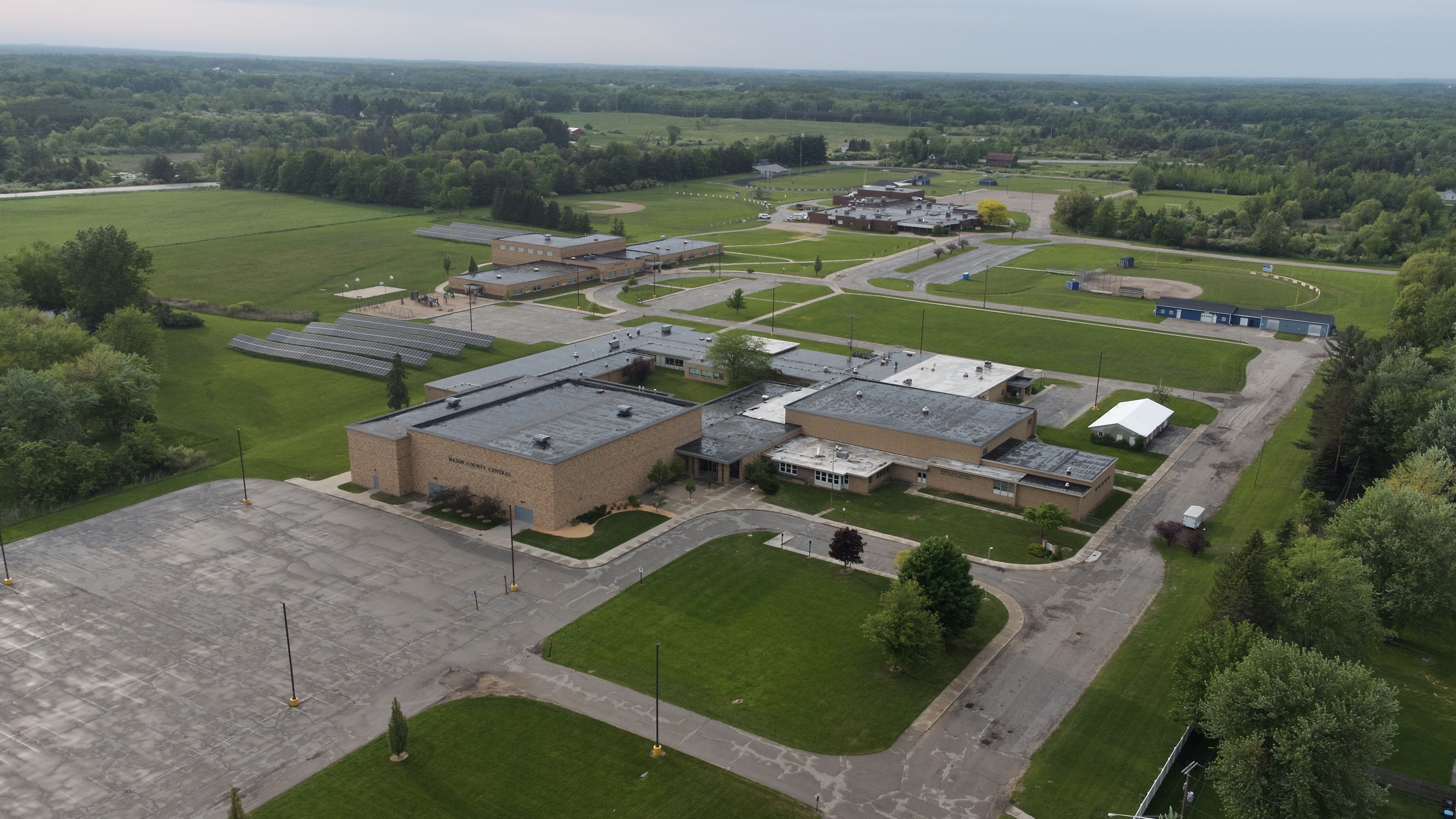|
Clio, Michigan
Clio () is a city in Genesee County in the U.S. state of Michigan. The city is located entirely within Vienna Township, but is administratively autonomous. As of the 2010 census, the city had a population of 2,646. Along with the rest of Genesee County, Clio is part of the Flint metropolitan statistical area. History The location was first settled in 1837 by Theodore P. Dean. Originally named Varna after the city's first grain buyer. Pere Marquette Railroad came through and put a station there in 1861. Its name was changed in 1866 to Clio, the muse of history. On July 23, 2007, Governor Jennifer Granholm announced Clio as a community chosen by the Michigan State Housing Development Authority (MSHDA), to take part in the Blueprints for Downtowns program. Clio would receive a comprehensive, market-driven strategy toward developing an action-oriented downtown that would result in economic growth, job creation and private investments. The Blueprints for Downtowns award, were ... [...More Info...] [...Related Items...] OR: [Wikipedia] [Google] [Baidu] |
Vienna Township, Genesee County, Michigan
Vienna Charter Township is a charter township of Genesee County in the U.S. state of Michigan. The population was 13,255 at the 2010 census, slightly up from 13,108 at the 2000 census. Communities *Farrandville is a small unincorporated community within the township at the junction of Saginaw Road ( M-54) with Farrand and Tuscola Roads at just northeast of Clio.Genesee County Map. J. Shively. State of Michigan Department of Information Technology Technology Center for Genographic Information. September 2007. It was named for Ira T. Farrand. *Pine Run is a small unincorporated community within the township at the junction of Saginaw ( M-54) and Vienna Roads ( [...More Info...] [...Related Items...] OR: [Wikipedia] [Google] [Baidu] |
2010 United States Census
The United States census of 2010 was the twenty-third United States national census. National Census Day, the reference day used for the census, was April 1, 2010. The census was taken via mail-in citizen self-reporting, with enumerators serving to spot-check randomly selected neighborhoods and communities. As part of a drive to increase the count's accuracy, 635,000 temporary enumerators were hired. The population of the United States was counted as 308,745,538, a 9.7% increase from the 2000 census. This was the first census in which all states recorded a population of over half a million people as well as the first in which all 100 largest cities recorded populations of over 200,000. Introduction As required by the United States Constitution, the U.S. census has been conducted every 10 years since 1790. The 2000 U.S. census was the previous census completed. Participation in the U.S. census is required by law of persons living in the United States in Title 13 of the United ... [...More Info...] [...Related Items...] OR: [Wikipedia] [Google] [Baidu] |
White (U
White is the lightest color and is achromatic (having no hue). It is the color of objects such as snow, chalk, and milk, and is the opposite of black. White objects fully reflect and scatter all the visible wavelengths of light. White on television and computer screens is created by a mixture of red, blue, and green light. The color white can be given with white pigments, especially titanium dioxide. In ancient Egypt and ancient Rome, priestesses wore white as a symbol of purity, and Romans wore white togas as symbols of citizenship. In the Middle Ages and Renaissance a white unicorn symbolized chastity, and a white lamb sacrifice and purity. It was the royal color of the kings of France, and of the monarchist movement that opposed the Bolsheviks during the Russian Civil War (1917–1922). Greek and Roman temples were faced with white marble, and beginning in the 18th century, with the advent of neoclassical architecture, white became the most common color of new churches ... [...More Info...] [...Related Items...] OR: [Wikipedia] [Google] [Baidu] |
Population Density
Population density (in agriculture: standing stock or plant density) is a measurement of population per unit land area. It is mostly applied to humans, but sometimes to other living organisms too. It is a key geographical term.Matt RosenberPopulation Density Geography.about.com. March 2, 2011. Retrieved on December 10, 2011. In simple terms, population density refers to the number of people living in an area per square kilometre, or other unit of land area. Biological population densities Population density is population divided by total land area, sometimes including seas and oceans, as appropriate. Low densities may cause an extinction vortex and further reduce fertility. This is called the Allee effect after the scientist who identified it. Examples of the causes of reduced fertility in low population densities are * Increased problems with locating sexual mates * Increased inbreeding Human densities Population density is the number of people per unit of area, usuall ... [...More Info...] [...Related Items...] OR: [Wikipedia] [Google] [Baidu] |
Census
A census is the procedure of systematically acquiring, recording and calculating information about the members of a given population. This term is used mostly in connection with national population and housing censuses; other common censuses include censuses of agriculture, traditional culture, business, supplies, and traffic censuses. The United Nations (UN) defines the essential features of population and housing censuses as "individual enumeration, universality within a defined territory, simultaneity and defined periodicity", and recommends that population censuses be taken at least every ten years. UN recommendations also cover census topics to be collected, official definitions, classifications and other useful information to co-ordinate international practices. The UN's Food and Agriculture Organization (FAO), in turn, defines the census of agriculture as "a statistical operation for collecting, processing and disseminating data on the structure of agriculture, covering th ... [...More Info...] [...Related Items...] OR: [Wikipedia] [Google] [Baidu] |
Karegnondi Water Authority
Karegnondi Water Authority (KWA) is a municipal corporation responsible for distributing water services in the Mid-Michigan and Thumb areas of the U.S. state of Michigan. Members of the authority are the cities of Flint and Lapeer, and the counties of Genesee, Lapeer and Sanilac. Karegnondi is a word from the Petan Indian language meaning "lake" and another early name for Lake Huron. Background Flint built its first water treatment plant (now defunct) in 1917. The city built a second plant in 1952. At the time of Flint's population peak and economic height (when the city was the center of the automobile industry), Flint's plants pumped 100 million gallons () of water per day. With the decline of the city's industry and a significant drop in the city's population (from almost 200,000 in 1960 to about 99,000 today), Flint pumped less water. By October 2015, when the Flint plant ended full time operations again, it pumped just 16 million gallons () daily. In 1963, Flint moved ... [...More Info...] [...Related Items...] OR: [Wikipedia] [Google] [Baidu] |
Cool Cities Initiative
Cool Cities Initiative began as an initiative started by Michigan Governor Jennifer Granholm to spur growth and investment in Midwestern cities. The Initiative was proposed in 2003 in response to the brain drain of students attending college in Michigan and then seeking employment out of the state. The Stadium District, immediately south of Oldsmobile Park in Lansing Lansing () is the capital of the U.S. state of Michigan. It is mostly in Ingham County, although portions of the city extend west into Eaton County and north into Clinton County. The 2020 census placed the city's population at 112,644, makin ..., was redeveloped using a grant from the Cool Cities project. References Urban planning in the United States Economy of Michigan {{econ-policy-stub ... [...More Info...] [...Related Items...] OR: [Wikipedia] [Google] [Baidu] |
Scottville, Michigan
Scottville is a city in Mason County in the U.S. state of Michigan. The population was 1,214 at the 2010 census. History The area was first mapped in 1874 as a stop along the Pere Marquette Railway. It was originally called Mason Center, as it was in the center of the county. It was later renamed Sweetland, after James Sweetland, who built a sawmill there in 1878. Hiram Scott platted the land in 1882, and won the right to rename the settlement as Scottville after winning a coin toss. Scottville was incorporated as a village in 1889 and as a city in 1907. On July 23, 2007 Governor Jennifer Granholm announced Scottville as the community chosen by the Michigan State Housing Development Authority (MSHDA) to take part in the Cool Cities Michigan Main Street program. Scottville will receive five years of intensive technical assistance through MSHDA, to help create opportunities for new development, economic growth and jobs. A similar award, the Blueprints for Downtowns award, ... [...More Info...] [...Related Items...] OR: [Wikipedia] [Google] [Baidu] |
Ypsilanti, Michigan
Ypsilanti (), commonly shortened to Ypsi, is a city in Washtenaw County in the U.S. state of Michigan. As of the 2020 census, the city's population was 20,648. The city is bounded to the north by Superior Township and on the west, south, and east by Ypsilanti Township. Ypsilanti is the historic site of Michigan State Normal School, now Eastern Michigan University, the fourth normal school established in the United States, and the historical campus of Cleary Business College, now Cleary University. It is also the location of the first Domino's Pizza. History Originally a trading post established in 1809 by a French-Canadian fur trader from Montreal, a permanent settlement was established on the east side of the Huron River in 1823 by Major Thomas Woodruff. It was incorporated into the Territory of Michigan as the village Woodruff's Grove. A separate community a short distance away on the west side of the river was established in 1825 under the name "Ypsilanti", after Dem ... [...More Info...] [...Related Items...] OR: [Wikipedia] [Google] [Baidu] |
Caro, Michigan
Caro is a city in and the county seat of Tuscola County, Michigan, United States. The population was 4,328 at the 2020 census and 4,145 at the 2000 census (an increase of 4.4%). Caro is located northeast of Flint and east of Saginaw in Michigan's Upper Thumb region. History Caro began as a logging camp on the Cass River established by Curtis Emerson in 1847. Later Samuel P. Sherman, who purchased in the north half of the northwest quarter of section 3 in Indianfields Township on September 8, 1852. Prior to this, only two land sales had been recorded, both for lumbering or speculative purposes. His son, William E. Sherman, had worked in the lumber industry nearby on the Cass River for some time prior to 1852 and William's favorable report persuaded his father to visit in 1851 and afterward purchased several tracts of land in addition to his initial purchase. In the 1856-57 session of the Michigan Legislature, construction of a road was authorized from Bridgeport in Sag ... [...More Info...] [...Related Items...] OR: [Wikipedia] [Google] [Baidu] |
Jennifer Granholm
Jennifer Mulhern Granholm (born February 5, 1959) is a Canadian-American lawyer, educator, author, political commentator, and politician serving as the 16th United States secretary of energy since 2021. A member of the Democratic Party, she previously served as the 47th governor of Michigan from 2003 to 2011, and as the attorney general of Michigan from 1999 to 2003, as the first woman to hold both offices. Born in Vancouver, British Columbia, Granholm moved to California at age four. She attended the University of California, Berkeley, graduated with a Bachelor of Arts degree in 1984 and then a Juris Doctor from Harvard Law School, where she was editor-in-chief of the ''Harvard Civil Rights-Civil Liberties Law Review''. She then clerked for Judge Damon Keith of the United States Court of Appeals for the Sixth Circuit, became an assistant U.S. attorney for the Eastern District of Michigan in 1991 and in 1995 she was appointed to the Wayne County Corporation Counsel. Granho ... [...More Info...] [...Related Items...] OR: [Wikipedia] [Google] [Baidu] |
Clio
In Greek mythology, Clio ( , ; el, Κλειώ), also spelled Kleio, is the muse of history, or in a few mythological accounts, the muse of lyre playing. Etymology Clio's name is etymologically derived from the Greek root κλέω/κλείω (meaning "to recount", "to make famous" or "to celebrate"). The name's traditional Latinisation is Clio,Lewis and Short, ''A Latin Dictionary: Founded on Andrews' Edition of Freund's Latin Dictionary: Revised, Enlarged, and in Great Part Rewritten by Charlton T. Lewis, Ph.D. and Charles Short, LL.D''. The Clarendon Press, Oxford, 1879, ''s.v.'' but some modern systems such as the American Library Association-Library of Congress system use ''K'' to represent the original Greek ''kappa'', and ''ei'' to represent the diphthong ''ει'' ( epsilon iota), thus ''Kleio''. Depiction Clio, sometimes referred to as "the Proclaimer", is often represented with an open parchment scroll, a book, or a set of tablets. Mythology Like all the mus ... [...More Info...] [...Related Items...] OR: [Wikipedia] [Google] [Baidu] |





